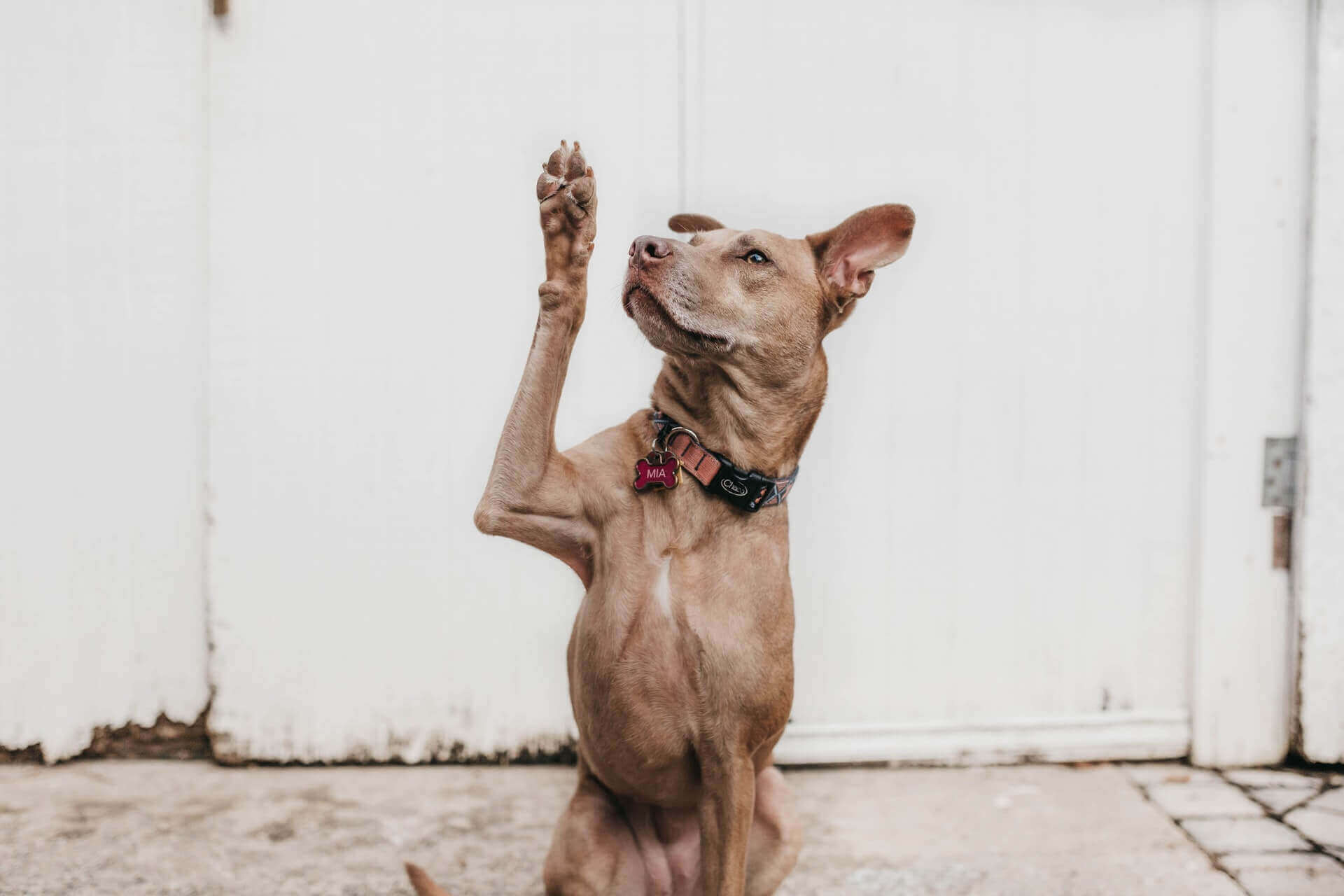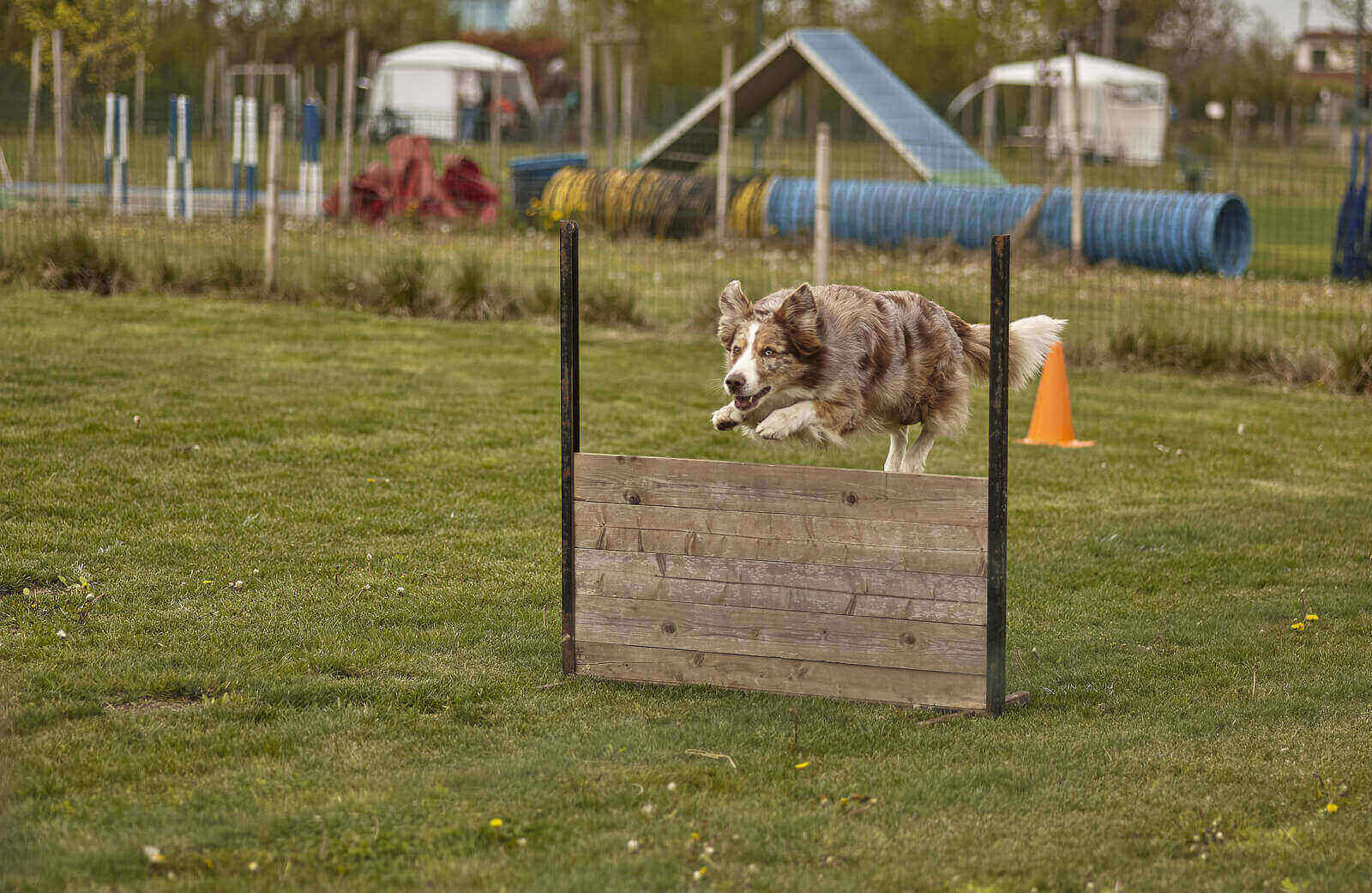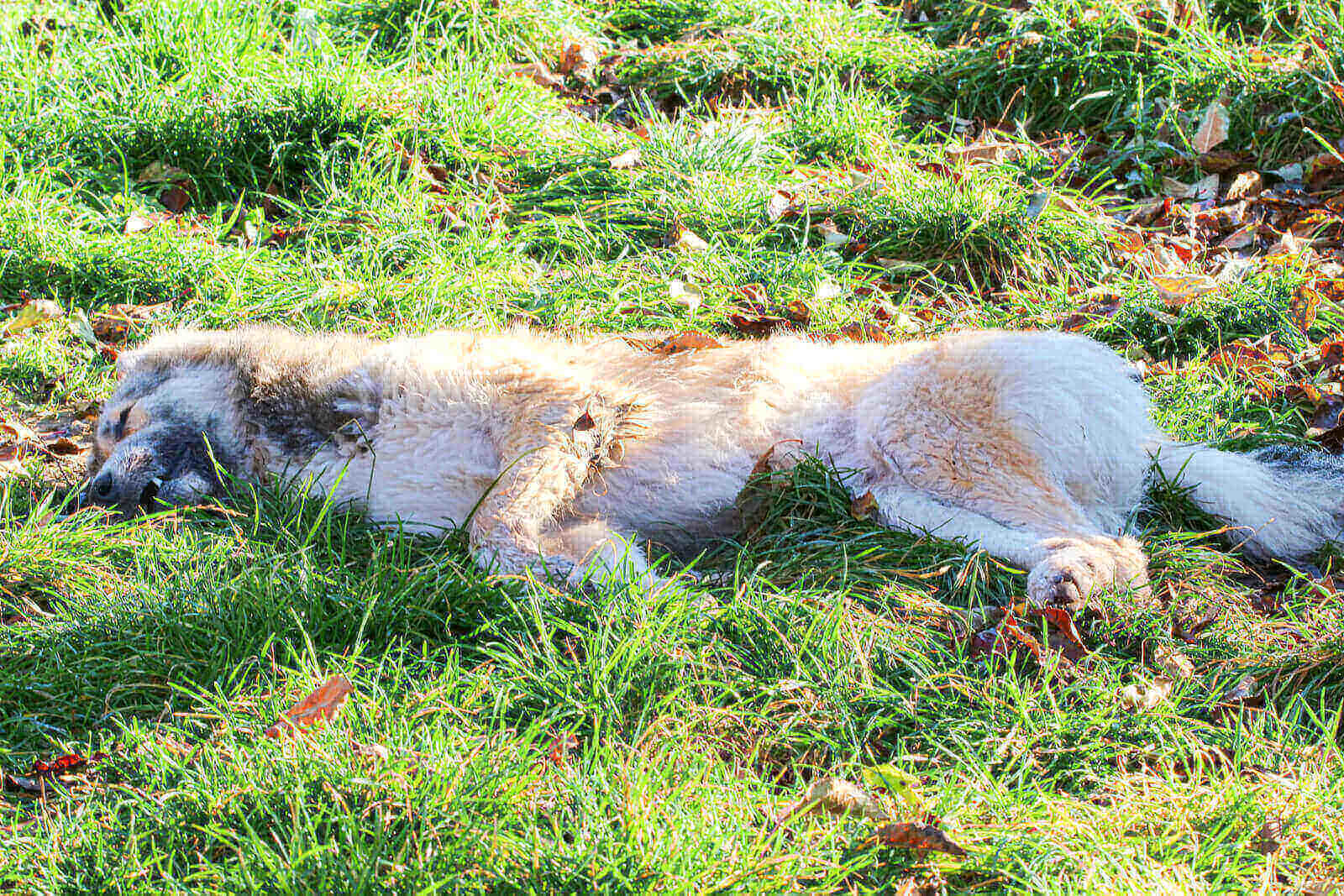Have you ever noticed your dog running on any hot or super cold surface without having any difficulty? Has this ever made you wonder how your dog’s feet are not super sensitive to the extreme hot or cold body like your own? This is because your dog’s feet and paws can easily withstand numerous temperatures and textures.
Why do you ask? Because your dog has paw pads. The paw pad is actually a special kind of skin on the bottom of his feet. Interestingly, your dog’s pads are more complex and more rigid than the soles of your feet. The dog’s feet are resistant to moderate kind of textures and temperature. This is because the skin found on their feet is not found anywhere else on their body.

What Are Dog Paws Made Of?
Imagine how important it is for the dog’s well-being to have healthy paws. Why did you ask? Because you will forever see your dog jumping, fetching, or running outside and inside of your house.
So has all of this made you wonder what the dog paws are made of? Now, this may cause you to wonder what the dog paws are made of? Wonder no more as we’ve got the answer for you. The dog paws are basically made of connective tissues, skin, bones, ligaments, and tendons.
However, if you think dogs have zero sensitivity to colder or hot surfaces, that is not true. It is just that they build up some tolerance to the extreme temperatures much faster than we can. If we go deep, the paw pads consist of five primary structures, which are described below:
- There are digital pads that are located on each toe. The use of these pads is to support some of the dog’s weight and their joints.
- Some claws are basically used for digging purposes. Like our nails, these claws are made of keratin.
- This also consists of the dewclaws, which have no such prominent purpose. They are vestigial thumbs. However, it is seen that some dogs use them to enhance their grip for holding things.
- A Carpal pad is basically a small pad that is located above the dewclaw and found in the animals that walk on their digits.
- A metacarpal pad is located on the center of the dog’s foot. It is the pad that supports most of the dog’s weight.
All these pads are made of elastic fibers and fat tissue named adipose. A thick kind of canine skin covers all these pads. The pampered dogs have smoother skin, and the dogs who walk more have rough and thick skin.
How Are Dog Paws Related To Size?
A dog’s paws are related to the size of the dog. How, you ask? This is because a dog’s larger feet or paws are basically associated with the greater height and greater weight of an adult dog and vice versa for the smaller dog.
If said in simpler words, a dog’s paws are basically an indicator of his adult size. For example, a larger breed like the Labrador Retrievers needs a bigger size of feet and paws to support a taller height and a more potent or heavier build. This is because the small feet and paws will look awkward on the larger dogs and fail to hold up the weight of the larger dogs.
However, the paw size can not only be an indicator for the adult dog’s size every time. The dogs like Collies, who are larger in size, have a smaller size of feet as compared to the other dog breeds of their age and size. This proves that the dog feet or paw’s size depend primarily on the species they belong to and not entirely on their age and size.
Why Are Dog Paws So Cute?
Have you ever looked at your dog’s paws and do nothing but adore them? Yes, this is relatable to all the people having dogs as their pets. This may make you wonder why dog paws are so cute, and here is the answer.
The dog paws look so cute because of the color and shape they are. In simple words, it is because of how they are designed. The dog paws are very tiny, soft, and smooth, and the pads look like they are made of jelly beans.
Additionally, when the dogs put their paws over their faces, they make you adore their little paws even more. Anything that they do that exposes their paws will make the paws look cute every time you see them.
What Are Dog Paws Supposed To Be Like?
Your dog paws are supposed to be smooth, not cracked, and enough moisturized. This means that your dog may need a pedicure more often than you do why you ask, because your dog’s paws are a significant indicator of their overall health.
According to Dr. Donna Raditic (DVM), the dog paws compose cells that have a higher turnover rate. Therefore, the dog’s paws require a lot of blood supply, nutrition, and moisture. If something is wrong with the dog’s health, it may start showing up on the paws at first. However, this is not always the case.
Additionally, it is better and recommended to get in touch with your vet to regularly moisturize the dog’s feet but not find any improvements. There may be some derma issues, liver issues or, metabolism issues that may be causing the feet to be dry.
How Sensitive Are Dog Paws?
The dog’s paws are quite sensitive, that even if you touch them, the feeling may make the dog vulnerable and awkward. Interestingly, some dogs may even resist when you try to touch their paws. The tops of the feet are a susceptible part of the dog’s body. Additionally, the spaces that you may find between the paw pads are even more sensitive, and if you touch this space, this can make your dog give a severe reaction.
You may ask why dogs are not sensitive to hot or cold surfaces then. This is not the case. As mentioned above, the dogs are quite sensitive to extreme hot or cold surfaces; however, they build up their tolerance related to temperatures much faster than us.

If explained in simpler words, if you do not let your dog out in the hot weather, whenever he gets to put his feet on the hot ground, he may react quite much and will be unable to walk correctly. This is because your dog needs time to build up some tolerance as he is not used to such hot weather.
Are Dog Paws Soft Or Rough?
Your dog’s paws can wither be smooth or rough depending on the terrain that your dog is found regularly walking on. If your dog is lazy or older and doesn’t get to walk much, or even when he walks, he steps on the grass or some smooth surface; his paws are more probably to be smooth.
However, if your dog is hiking most of the time along with you or walk on surfaces made of concrete or asphalt, their paws are relatively going to be rough. So it entirely depends on where you decide to take your dog for a walk.
However, you can start with some shorter periods of time walking them on the rough surfaces. This is because this will make the paws tough and don’t cause much harm to their feet.
Why Are Dog Paws Rough?
Are you noticing your dog’s paws turning rough day by day? Are you wondering why it’s happening and what could be the causes? Look no more, as we have covered the answers that you are looking for.
Your dog’s paws may be rough because of walking regularly on the ground or some rough surface. Ever wondered about the calluses that build up on your feet when you walk barefooted? Yes, this is precisely the same case.
When your dog walks on the rough surfaces, it causes some calluses to be formed on his feet. This is not something as horrible as it sounds because it builds up to protect your dog’s feet rather than harming them. So when you feel some kind of texture on your pup’s foot, don’t panic, as it’s quite normal.
Are Dog Paws Tougher Than Human Feet?
Yes, the dog paws are more rigid than our feet. Why you ask? Here is the answer. The dog paws are more stringent than the human feet because they are able to withstand numerous textures and temperatures.
Not only this, they have some kind of unique skin on the bottom of their feet. This skin is called the paw pads that make the feet withstand the temperatures and textures. Also, this skin is not found anywhere else on the dog’s body. So it’s just their feet that are able to withstand different temperatures and textures like a pro.
This makes the paws of the dog more complicated and tough as compared to the soles of our feet.
Are Dog Paws Supposed To Be Pink?
The dog’s paws are supposed to be pink when they are young. However, when they start turning black, don’t worry. The dog paws may start turning black from pink when the outer skin of the paws starts getting more stringent.
When the dog is around six months of age, the paws are a mixture of pink and black shades. The more they start walking, the blacker the paws will start getting. The black stains on their paws mean the skin is getting tougher. This is an indication that now the dogs can walk for an extended period and anywhere without any difficulty and hesitation.
However, don’t stop your dog from walking more, as you don’t need to stop this process. The black paws are an excellent process that will make the outer skin of your dog’s paws black. This is good for the dog as it makes their walking journey easy and less sensitive.
How Are Dog Paws Supposed To Feel?
Let me break it to you; your dog’s paws are not supposed to have injuries and improper care. Yes, you read it right. Your dog’s paws can easily get injured while walking on some rough surfaces like carpets or asphalt roads.
However, it is your duty to keep checking your dog’s paws regularly. How, you ask? Here is how you can save a proper check on your dog’s paws:
- Gently spread the toes apart of your dog’s feet.
- Now inspect the injuries between their toes and the paw pads.
- Also, look for any kind of discoloration or swelling.
- Check if the dog shows signs of pain or tenderness when you have a check.

What Are Dog Paws Adapted For?
Here is what the dog paws are adapted and not adapted for:
- The dog’s paws can quickly adapt to more incredible speeds.
- They can basically adapt to having a better grip on the surface.
- The paws are adapted to having more substantial muscles and tendons.
- They are not adapted to extreme weathers like super hot or cold surfaces.
- The dog paws are not adapted to harsh or rough surfaces.
- They are basically adapted to working cleverly according to the surroundings and environment’s requirements.

Welcome to Learn About Pet. My name is Rajkumar Ravichandran and I love all pets, travel, and amazing food. I write about my passion and personal experience caring for multiple pets in this blog! ❤️
Post Disclaimer
DISCLAIMER: THIS BLOG OR WEBSITE, "Learn About Pet", DOES NOT PROVIDE YOU WITH MEDICAL ADVICE AND IS NOT A SUBSTITUTE FOR MEDICAL ADVICE. ALWAYS GET IN TOUCH WITH YOUR PERSONAL VETERINARIAN AND USE INFORMATION HERE AS GENERAL ADVICE.
The information, including but not limited to, text, graphics, images and other material contained on this website are for informational purposes only. No material on this site is intended to be a substitute for professional veterinary advice, food recommendation, diagnosis, or treatment. Always seek the advice of your veterinarian or other qualified health care provider with any questions you may have regarding a medical condition or for pet food related questions.







